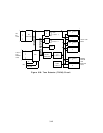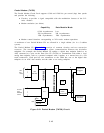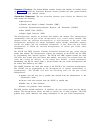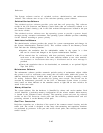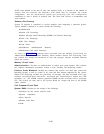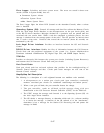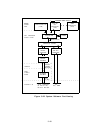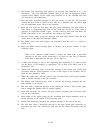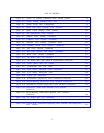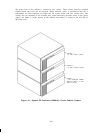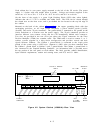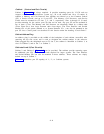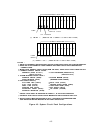6. The Station Call Processing task retrieves its message and interprets it as a call
origination.
The task determines whether there is an idle call appearance button
(System Access button) on the called voice terminal.
If so, two available time slots
are reserved for the connection.
7. The task sends downlink messages to the port circuit via the OS. The messages
instruct the port circuit to listen for dial tone on a specified time slot and to light
the call appearance status LED on the terminal.
8. When the user dials the first digit, the port circuit determines the digit dialed. It
then listens to appropriate time slots on the TDM bus for the two tones used to
generate an equivalent DTMF signal.
It then removes dial tone and feeds the
DTMF signal back to the user until the user releases the button.
9. The port circuit sends an up-link message with each digit dialed to the OS that
routes them to the Dial Plan Manager (DPM).
10. The DPM collects the dialed digits and determines that the call is a station-to-
station call.
11. When the DPM collects enough digits to identify an extension number it stops
collecting digits.
Note: If the extension number dialed is invalid, the DPM sends a down-link
message to the port circuit instructing it to listen to time slot 07 (Reorder
Tone) that is then heard by the user. Go to Step 18.
12.
13.
14.
15.
16.
17.
18.
19.
20.
A down-link message is sent to the originating port instructing it to listen to time
slot 06 (busy) or 08 (ringing), as appropriate.
Go to Step 18 for Busy Tone or an
unanswered call.
Station Call Processing sends a down-link rnessage to the station port circuit pack
associated with the called extension to turn on the ringer of the terminal, and to
flash the call appearance LED.
When the called party lifts the receiver, the associated port circuit pack controller
sends a off-hook message to the OS as before.
The Station Call Processing task, when it receives the message interprets the off-
hook message as an answer.
The task sends a down-link message to the called port circuit to turn off the ringer
and to change the flashing LED to steadily lighted.
Down-link messages are sent to the port circuits assigning talk and listen time
slots for the connection.
When either of the parties hangs up, the associated port circuit controller sends an
up-link message to the Station Call Processing task.
Station Call Processing interprets the on-hook message as the end of the call
The task then sends a down-link message to the port circuit pack controllers to
disconnect the time slot connections and turn off the LEDs associated with the
calls.
3-49




